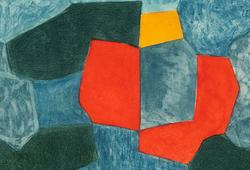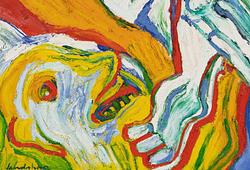Félix Martinez
Village Scene, The Philippines
Signed Felix Martinez and dated 1886. Oil on canvas 69 x 89 cm.
Saleroom notice
Acquired at Göteborgs Auktionsverk, Gothenburg, Sweden in the 198os.
Private Collection.
Provenance
Acquired at Göteborgs Auktionsverk, Gothenburg, Sweden in the 198os.
Private Collection.
More information
Felix Martinez (1859-1919) was a pioneering Filipino painter during the Spanish colonial period. Born into a wealthy Ilustrado family, he received a classical Western education and emerged as one of the earliest Filipino artists whose works reflected both European academic training and local Filipino life. The Ilustrados—the enlightened class—were instrumental in shaping the country’s cultural identity, serving as patrons and practitioners of the arts.
Martinez’s career coincided with a transformative era in Philippine art, when artists began moving away from purely religious themes toward secular and everyday subjects. Influenced by Spanish colonial aesthetics, but grounded in local experience, this new direction gave rise to tipos del país—portraits of Filipinos in traditional attire—and genre scenes capturing rural life.
His painting Village Scene exemplifies this cultural synthesis. A couple dances solemnly to music performed by a small ensemble, set against a lush rural backdrop of thatched homes on stilts. The moment is intimate and focused, a quiet celebration of tradition and community. The work reflects Martinez’s dual allegiance: to European techniques and Filipino subject matter.
At a time when photography had not yet fully developed as a documentary tool, painting served as the primary medium through which daily life was visually recorded. Martinez’s depictions gave voice to a Filipino identity shaped by colonization but increasingly self-aware and expressive.
Throughout his career, Martinez exhibited both locally and internationally. He contributed to the Philippine Exposition in Madrid in 1887 and later won recognition at the Universal Exposition in St. Louis in 1904. In 1891, he was appointed professor of modeling and casting at La Escuela Práctica Profesional de Artes y Oficios de Manila, a position he held until the end of Spanish rule in 1898.
Martinez’s legacy endures as a foundational figure in the pre-modern period of Philippine art—his work capturing a people in transition, between tradition and transformation.



















































